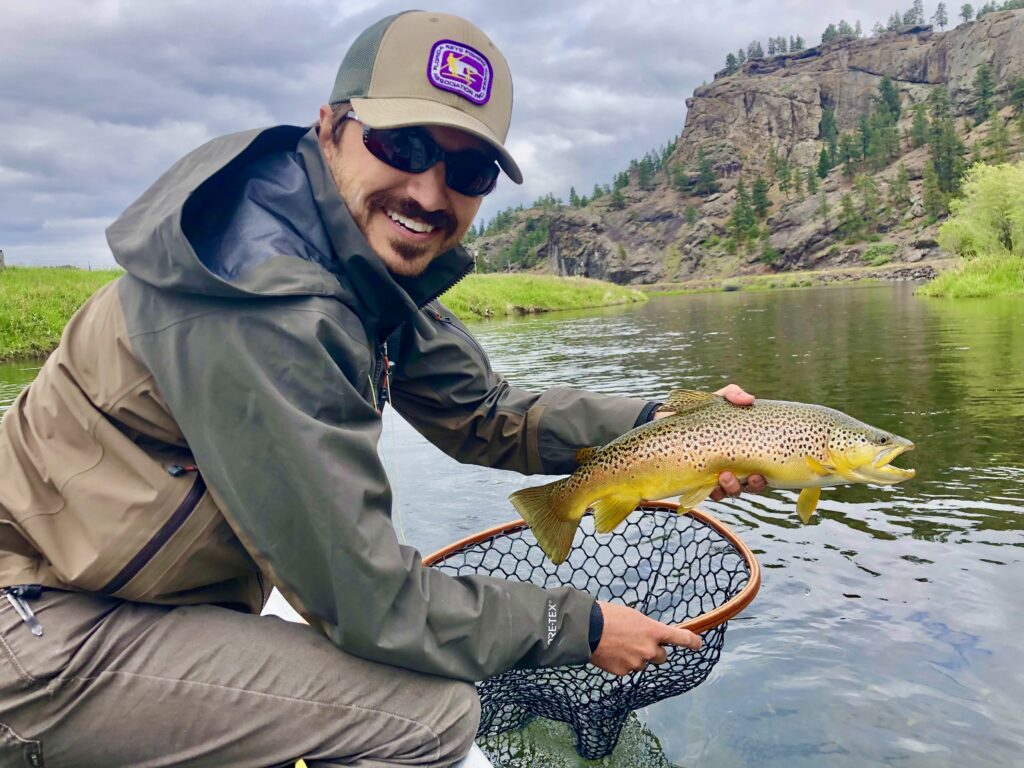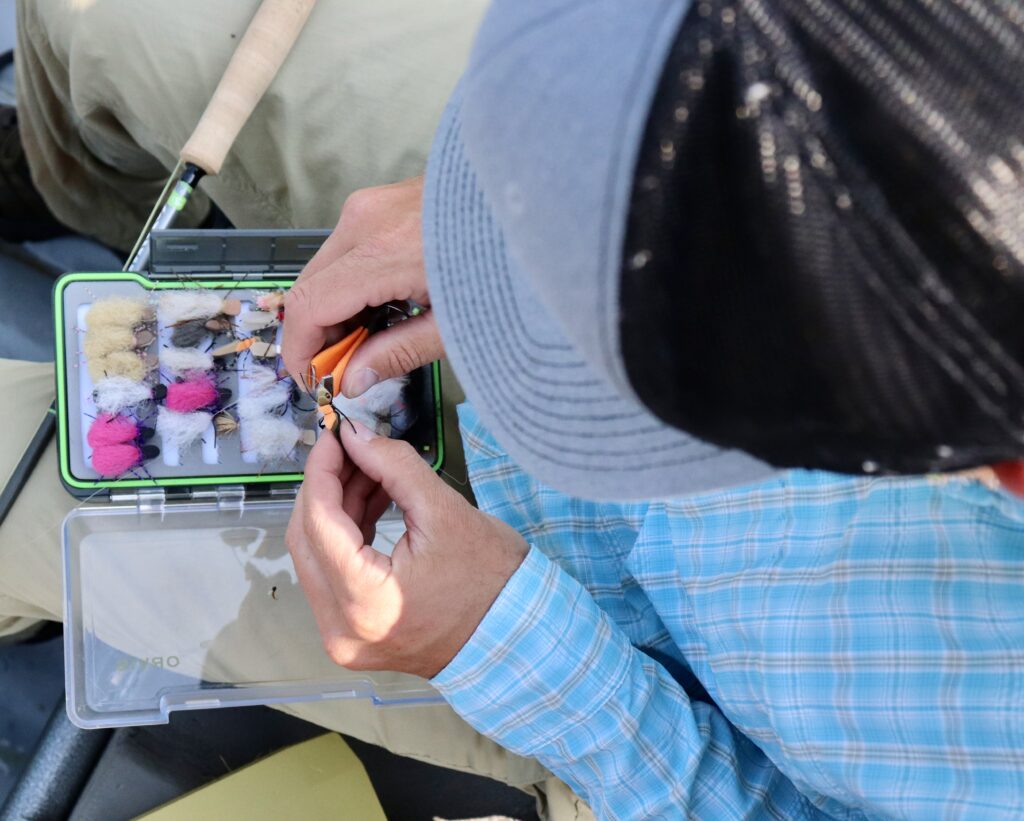Ahh spring, Montana really comes alive during the spring months with the arrival of wildflowers, warmer weather and rising trout. After a long winter anglers are chomping at the bit for pleasant weather and events like the Mother’s Day caddis hatch.
Timing the Hatch
Around mid May is when we begin to see our first caddis emergence but really depends on weather and water temperatures. These Caddis flies start to hatch when water temps hit the 50’s. As the weather warms up, the caddisfly larvae become more active and start to pupate. During this stage, the larvae undergo a transformation and develop into winged adults. When the pupation is complete, the adult caddisflies break out of their cases and emerge through the water column and break the water’s surface film.

Mother’s Day Caddis = Happy Trout
The emergence of the caddisflies can really have hungry trout looking up. The caddis mate in mid-air, and the females return to the water’s surface to lay their eggs. During this time, the adult caddisflies are vulnerable to predation as the bounce and skitter on the water. Trout take advantage often gorging themselves on these protein packed insects.
Prime Time for big Dry Flies
Fly fishing the Mother’s Day caddis hatch is a prime time to fly fish for trout with dry flies. We see the best hatches later in the day. Fishing high floating dry flies makes for some exhilarating strikes. Below are tips for Fishing the Mother’s Day Caddis Hatch in Montana.

- Know the Timing: The Mother’s Day caddis hatch typically occurs around early May. Keep an eye on flows and water temps to determine the best time to target the hatch.
- Use the Right Flies: Elk Hair Caddis, X-Caddis, and Sparkle Pupa are great choices. #14-16. Carry a variety of caddis patterns to match the caddisflies natural appearance.
- Focus on the Emergers: During a caddis hatch, the emerging caddisflies are highly vulnerable and attract hungry trout. Use emerger patterns that imitate the pupa stage of the caddisfly as they rise through the water column. Swing or drift your emerger flies in the surface film or tag it off your big dry fly.
- Watch for Rise Forms: Keep an eye on the water’s surface for trout rising to take caddisflies. Position yourself upstream or across from the rises to increase your chances of a successful presentation.
- Be Stealthy: Caddis hatches can bring trout to the surface, but they can also make them wary. Approach the water with caution. Avoid making unnecessary noise, and use longer leaders.
- Experiment with Fly Size and Color: Caddis can be in variety of sizes and color, so be prepared to adjust. If the trout seem selective, try changing the size or color of your flies. If your getting looks at your fly try scaling down in size.
- Wear Polarized Sunglasses: Polarized sunglasses can help you spot rising fish and caddis activity on the water’s surface. Good shades can give you a significant advantage when fishing dry flies.
Fishing the Mother’s Day caddis hatch can be exciting, but it requires patience and observation. Take the time to read the water, observe the fish, and make adjustments to your tactics as needed. And most importantly, enjoy the experience of being on the water and appreciating the beauty of the rivers. For more about dry fly fishing click here


 Spring Missouri River Fishing Report
Spring Missouri River Fishing Report
Leave a Reply